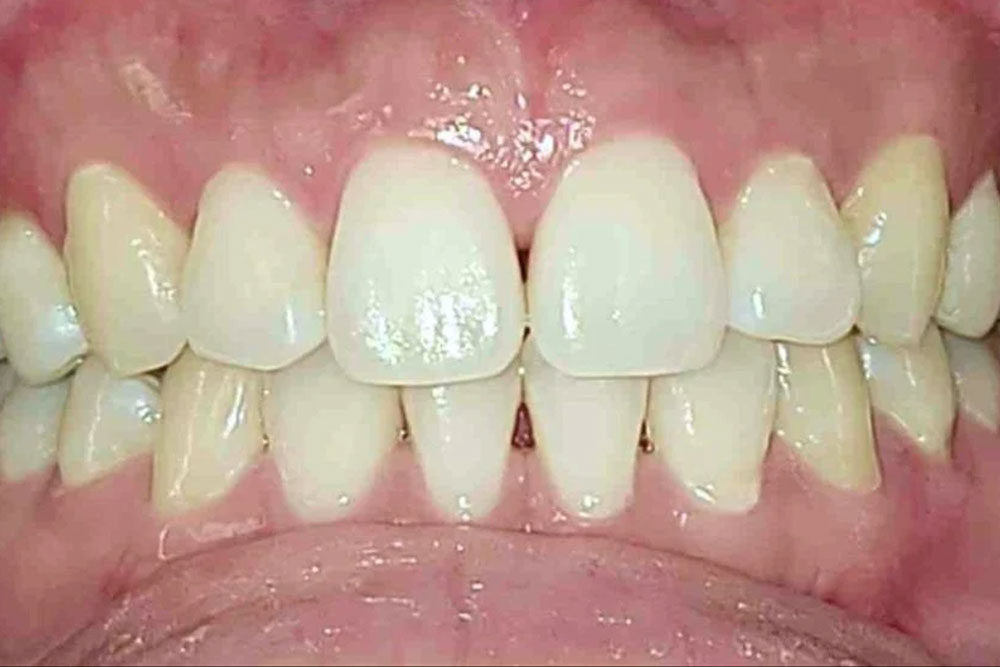Dental black triangles are small, triangular gaps that appear between the teeth near the gum line. These spaces look black because they allow the dark inside of the mouth to show through, creating an unaesthetic appearance when smiling. These gaps are more common as people age or after dental treatments like braces.
Why is it called a black triangle?
The term comes from the triangular shape of these spaces, combined with the dark appearance caused by the absence of gum tissue filling the area. These gaps not only affect aesthetics but may also lead to oral health issues if left untreated.
Causes of Dental Black Triangles
- Gum Recession: Loss of gum tissue due to aging, aggressive brushing, or periodontal disease exposes the space near the tooth root.
- Bone Loss: Underlying bone loss from gum disease reduces the support for gums and teeth.
- Orthodontic Treatment: Movement of teeth during treatments like braces can create gaps if the gums don't adjust properly or cleaning can lead to plaque build-up and gum damage, creating open spaces.
- Tooth Shape or Size: Naturally small or triangular teeth may lack sufficient gum coverage between them.
- Lifestyle Factors: Smoking or poor diet can weaken gum health, contributing to the formation of black triangles.
Modern Dental Treatment for Black Triangles
Dentists offer several solutions to address black triangles depending on the severity and underlying cause:
1. Composite Bonding:
- A tooth-colored resin is applied to reshape teeth and close the gaps.
- Non-invasive and quick.
2. Orthodontics:
- Braces or aligners like Invisalign can shift teeth to reduce gaps.
3. Gingival Grafting:
- Tissue from other parts of the mouth is grafted onto receded gums to fill the gaps.
4. Veneers or Crowns:
- Thin shells or caps are placed over teeth to alter their shape and close spaces.
5. Hyaluronic Acid Injections:
- Used to plump up the gum tissue in the affected areas for a more natural look.
6. Preventive Measures:
- Dental cleanings and proper brushing techniques to prevent further gum damage.
Ayurvedic Perspective on Dental Black Triangles
Ayurveda considers black triangles a result of weakened Kapha dosha, leading to gum recession and loss of gum adhesion. Poor gum health is often linked to the accumulation of Ama (toxins) and improper oral care.
Ayurvedic Remedies to Complement Modern Treatments
1. Oil Pulling (Gandusha):
- Swishing oils like sesame or coconut oil helps strengthen gums and reduce toxins.
2. Herbal Gums Massage:
- Massage gums with Triphala powder or clove oil to improve blood circulation and tone the gums.
3. Neem and Babool Twigs:
- Using twigs for gentle brushing can prevent gum disease and tighten gums.
4. Amla (Indian Gooseberry):
- Rich in vitamin C, it boosts collagen production and improves gum health.
5. Triphala and Turmeric Mouth Rinse:
- Anti-inflammatory and antibacterial properties help maintain oral hygiene and prevent further gum damage.
6. Dietary Support:
- Include calcium and vitamin C-rich foods to promote gum repair.
Conclusion
Dental black triangles are a common dental issue with both cosmetic and functional implications. Modern dentistry offers effective solutions to restore aesthetics and functionality, while Ayurveda complements these treatments by promoting gum health, preventing recurrence, and providing a holistic approach to oral care. A combined approach ensures optimal results and a confident smile.



